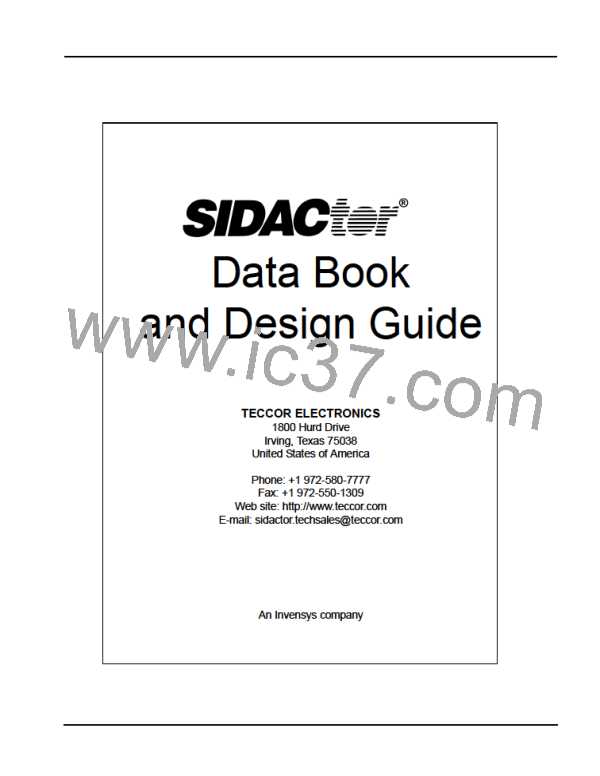Analog Line Cards
Analog Line Cards
Given that line cards are highly susceptible to transient voltages, network hazards such as
lightning and power cross conditions pose a serious threat to equipment deployed at the
central office and in remote switching locations. To minimize this threat, adequate levels of
protection must be incorporated to ensure reliable operation and regulatory compliance.
Protection Requirements
When designing overvoltage protection for analog line cards, it is often necessary to
provide both on-hook (relay) and off-hook (SLIC) protection. This can be accomplished in
two stages, as shown in Figure 3.20.
F1250T
R
E
L
A
Y
S
L
I
Off Hook
Protection
On Hook
Protection
C
F1250T
Figure 3.20 SLIC Overview
The following regulatory requirements may apply:
•
•
•
•
GR 1089-CORE
ITU-T K.20/K.21
UL 60950
TIA-968 (formerly known as FCC Part 68)
On-Hook (Relay) Protection
On-hook protection is accomplished by choosing a SIDACtor device that meets the
following criteria to ensure proper coordination between the ring voltage and the maximum
voltage rating of the relay to be protected.
V
DRM > VBATT + VRING
VSꢀ?ꢀVRelay Breakdown
This criterion is typically accomplished using two P2600S_ SIDACtor devices (where _
denotes the surge current rating) connected from Tip to Ground and Ring to Ground.
However, for applications using relays such as an LCAS (Line Card Access Switch),
consider the P1200S_ from Tip to Ground and the P2000S_ from Ring to Ground.
© 2002 Teccor Electronics
3 - 17
http://www.teccor.com
+1 972-580-7777
®
SIDACtor Data Book and Design Guide

 TECCOR [ TECCOR ELECTRONICS ]
TECCOR [ TECCOR ELECTRONICS ]